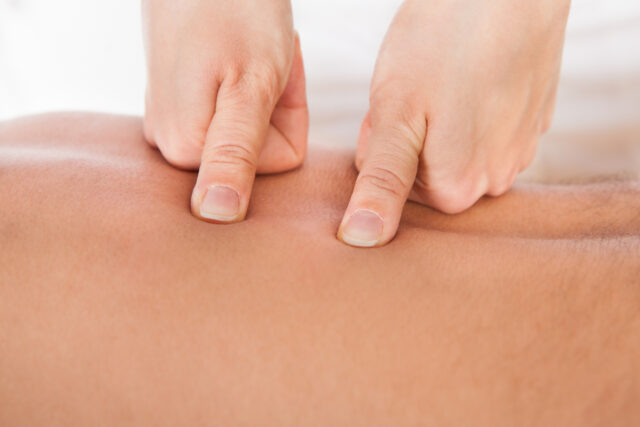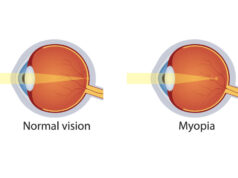
Migraines are typically experienced as a severe throbbing pain on one or both sides of the head, and in some cases, debilitating symptoms can be present without any head pain.
According to the Migraine Research Foundation, migraines are the third most prevalent illness in the world, affecting 39 million men, women, and children in the U.S. and one billion people worldwide.
Unlike a headache, migraines are neurological conditions that are often debilitating and chronic with extremely incapacitating symptoms such as nausea, vomiting, heightened sensitivity to light and sound, visual disturbances, and dizziness. In this article, we will explore seven natural ways that you can minimize and manage the pain of a migraine.
1. Acupressure

A traditional method used in Chinese medicine, acupressure can help to relieve tension and tightness in the muscles which can often be the catalyst for a migraine. According to oaklandspinenj.com, applying pressure to specific points on the body may provide migraine relief. These points are stimulated on areas such as the face, hands, ears, neck, and feet to alleviate pain.
A 2012 study found that pressure applied to the PC6 point, located on the inner side of the wrist, was effective in reducing nausea or vomiting associated with migraine headaches. Other pressure points include Third eye or Yin Tang, located between the eyes, and Moving point or Liver 2, between the big toe and index toe. Applying gentle pressure to these pressure points may help to alleviate pain associated with migraine headaches.
2. Hydration
Migraines can often occur as a result of dehydration, so it is important to drink enough water throughout the day. Staying hydrated during a migraine is also advisable, and may help to reduce the length and severity of the attack.
The brain consists of 80% water. When the body becomes dehydrated, the loss of fluid in the brain tissue can cause it to temporarily contract or shrink causing it to pull away from the skull. This triggers the pain receptors in the membrane surrounding the brain, resulting in a severe headache or migraine.
Try adding a slice of lemon or cucumber to your water to make it more appealing or dilute some fruit juice to add some flavor to it. Herbal teas are also a great option to give your water some taste, making it easier and more enjoyable to drink.
3. Diet

Nutrition can play a major role in preventing the onset of migraines. Migraines often occur as the result of missing meals. Long periods between eating may trigger a migraine, or cause headaches to be more acute due to low blood glucose levels. Migraine sufferers should make time for regular meals, and small frequent meals could be beneficial.
Commonly cited triggers for migraines include alcohol, in particular red wine, chocolate, caffeine, aged cheese, artificial sweeteners, preservatives containing nitrates and nitrites, and monosodium glutamate (MSG).
On the other hand, foods containing high magnesium content such as dark leafy greens, whole grains, and avocado, as well as foods rich in omega-3 fatty acids may help people who suffer from migraines. Foods that contain high levels of omega-3 fatty acids include fish products such as salmon, mackerel as well as seeds, and legumes.
4. Essential Oils
Introducing scents to your day can promote a feeling of calm and relaxation, alleviating stress and anxiety which are often triggered by a migraine headache. Lavender oil is known for its calming properties and this can be inhaled, added to a diffuser, or even massaged into the temples. Basil is known for its analgesic and anti-inflammatory properties and is a natural muscle relaxant that can offer relief for fatigued or tense muscles.
Peppermint oil is one of the most commonly used essential oils to treat migraines. Its menthol content can help to relax muscles and reduce pain. It is thought that menthol may help in managing migraines due to its ability to activate receptors in the skin that produce a cooling sensation. Other alternative essential oils which can help to reduce the severity of a migraine include rosemary, ginger, and chamomile oil.
Remember to do a patch test for any allergic reactions before applying the oil to your skin.
5. Yoga and Stretching

Activities such as yoga and stretching can help to promote the blood flow around the body and alleviate tension in the muscles, all of which are helpful for migraine headaches. By loosening tense areas which hold stress such as the neck, head, and shoulders, yoga can help prevent migraines from occurring or reduce the severity of the symptoms.
Certain poses, such as downward-facing dogs and child’s poses can help to boost circulation and improve blood flow to the brain. This may reduce any pain or throbbing sensations around the head. Having a daily practice that incorporates some light stretching or yoga can be effective in helping ward off a migraine attack.
6. Herbal Remedies
Herbal remedies have been used for centuries by cultures worldwide for a number of ailments, including headaches and migraines.
Feverfew from Vita Living is one such herbal remedy that has proven to offer relief for migraines. It is a medicinal plant in the daisy family, Asteraceae, and is native to western Asia and the Balkans. Studies have found that feverfew alone, or combined with other ingredients, can reduce the frequency and duration of migraine headaches and may be effective in reducing pain, nausea, vomiting, and sensitivity to light and noise.
Other herbal remedies that may alleviate migraine symptoms include willow bark, butterbur, and valerian root.
7. Biofeedback

Biofeedback therapy is a behavioral medicine technique in which patients learn to control involuntary bodily functions, such as skin temperature, heart rate, or blood pressure. Sensor electrodes are placed on specific parts of the body to measure common bodily functions.
Muscle tension and stress can cause migraines and other types of headaches. There is evidence to suggest that biofeedback therapy can help to relax muscles and reduce the stress typically yielding a 45% to 60% reduction in headache frequency and severity.
By putting these seven tips into practice you can help to lower the frequency of your migraines and reduce the effect of any symptoms which you may experience.










